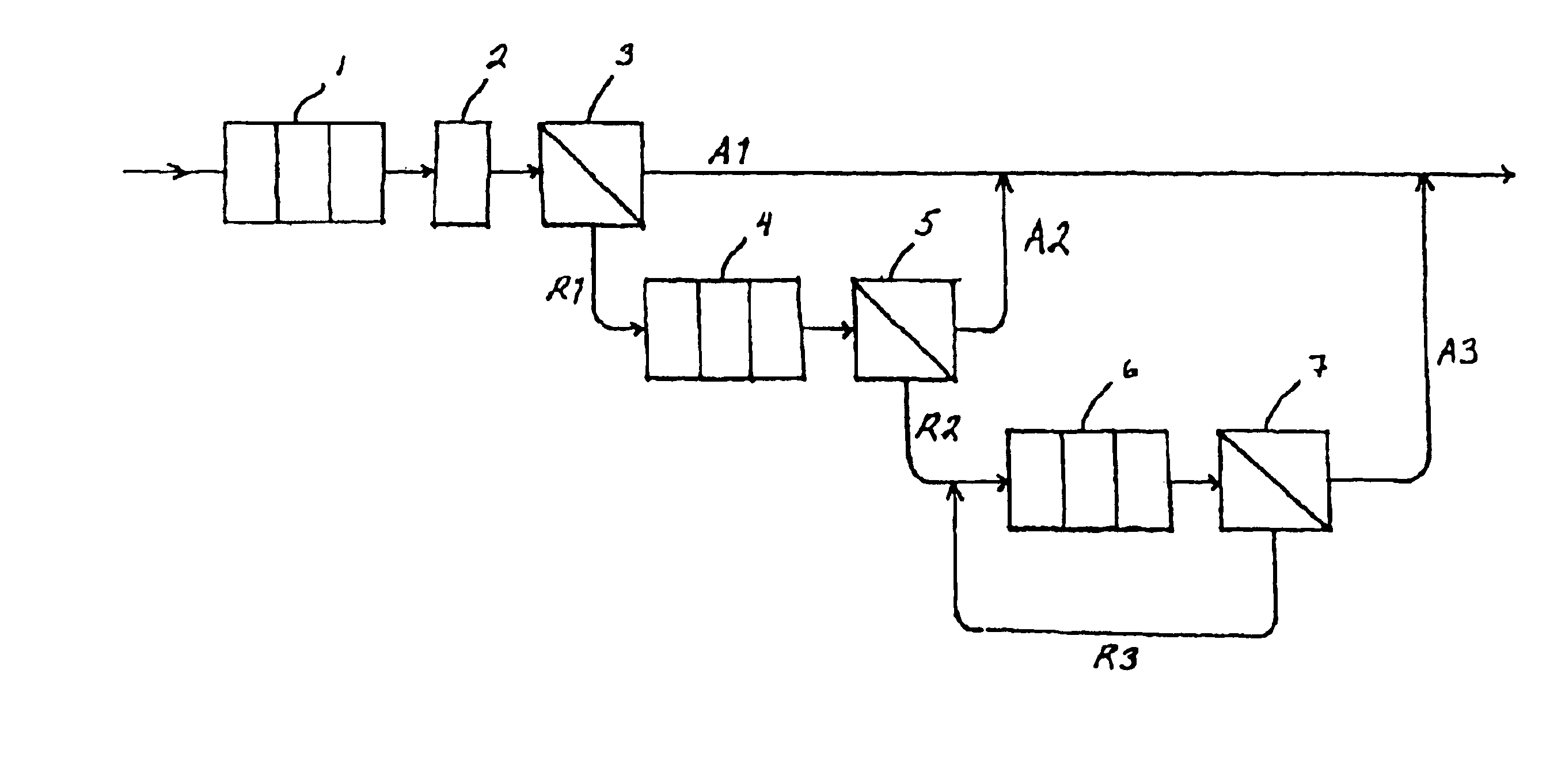Printing paper
a printing paper and paper technology, applied in the field of printing paper, can solve the problems of poor tear resistance of paper with a high content of mechanical pulp, difficult to achieve long average fibre length and fibre pulp with a good formation, and achieve the effect of improving certain properties of paper
- Summary
- Abstract
- Description
- Claims
- Application Information
AI Technical Summary
Benefits of technology
Problems solved by technology
Method used
Image
Examples
example 1
[0058]During the manufacture of coated printing paper according to the invention, calender tests were made with an OptiLoad® calender. The nip pressure was 500 kN / m. A 6-roll calender was used for sample 1, an 8-roll calender for samples 2 to 4. The temperature of the calender was adjusted so that it was 110° C. during the calendering of the sample 2, 125° C. during the calendering of sample 3, and 140° C. during the calendering of sample 3. The properties measured of the samples are given in Table 1.
[0059]
TABLE 1Properties of some coated printing papers according to theinvention.Sample1234Grammage (g / m2)52.852.252.952.3Thickness (μm)58575852Density (kg / m3)951966972999Bulk (cm3 / g)1.061.031.021Filler content 560° C. (%)20.820.820.420.8Mechanical pulp (%)100100100100Chemical pulp (%)0000Tensile strength in machine3.133.093.183.22direction (kN / m)Elongation (%)machine direction1111cross-machine direction1.61.41.71.4Tear resistance (mN)cross-machine direction155151149155Bending strength ...
example 2
[0060]A comparison was made between the properties of the coated printing paper according to the invention and coated printing papers of prior art. The grammages of the samples to be compared in the same table are substantially the same. The properties are presented in tables 2 to 4.
[0061]
TABLE 2Properties of coated printing papers The coated printing paperaccording to the invention is sample 5, samples ofprior art are samples 6 to 8.Sample5678Grammage (g / m2)5251.651.650.6Thickness (μm)57474748Density (kg / m3)954109211001061Bulk (cm3 / g)1.0480.920.910.94Filler content 560° C. (%)28.225.530.529.7Mechanical pulp (%)100566570Chemical pulp (%)0443530Tensile strength in machine2.964.012.782.82direction (kN / m)Elongation (%)machine direction0.91.251.21.1Tear resistance (mN)cross-machine direction132373—242Bending strength (mN)machine direction2818.92017cross-machine direction139.6119.5Bending length (mm)machine direction10696—97cross-machine direction8471—76Bonding strength202286294318SB Hig...
example 3
[0064]In the following, one fibre pulp grade will be presented, of which it is possible to make printing paper according to the invention. Of the fibre pulp grade, whose properties are shown in Table 5, unoriented sheets, whose properties are shown in Table 6, were made in a laboratory.
[0065]
TABLE 5Properties of fibre pulp.Fibre distribution by Bauer-McNett methodFreeness+16+28+48+200−200Average fibre(ml CSF)(%)(%)(%)(%)(%)length (mm)***6134.010.617.916.920.61.67***The average fibre length is the average of the length-weighted average fibre length measured with a Kajaani FS-200 device.
[0066]
TABLE 6Properties of unoriented sheets made of fibre pulp.Grammage (g / m2)60.2Thickness (μm)121Density (kg / m3)497Bulk (m3 / kg)2.01Tensile index (Nm / g)55.7Elongation (%)2.46Breaking energy index920.6(J / kg)Tear index (mNm2 / g)7.48
[0067]As seen from the properties in Tables 5 and 6, good strength values are achieved for the fibre pulp. The fibre distribution differs slightly from the typical fibre dis...
PUM
| Property | Measurement | Unit |
|---|---|---|
| surface roughness | aaaaa | aaaaa |
| surface roughness | aaaaa | aaaaa |
| surface roughness | aaaaa | aaaaa |
Abstract
Description
Claims
Application Information
 Login to View More
Login to View More - R&D
- Intellectual Property
- Life Sciences
- Materials
- Tech Scout
- Unparalleled Data Quality
- Higher Quality Content
- 60% Fewer Hallucinations
Browse by: Latest US Patents, China's latest patents, Technical Efficacy Thesaurus, Application Domain, Technology Topic, Popular Technical Reports.
© 2025 PatSnap. All rights reserved.Legal|Privacy policy|Modern Slavery Act Transparency Statement|Sitemap|About US| Contact US: help@patsnap.com



